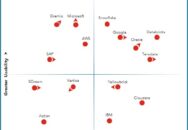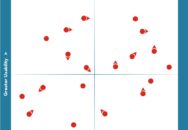Guidebook: Tensorflow on AWS
Deep learning (DL) may be one of the most common buzzwords in artificial intelligence (AI) today, but until recently it has been mostly conceptual and experimental in nature. Deep learning is a subset of machine learning (ML): ML uses algorithms to analyze data, learn from that data, and make decisions or recommendations based on that learning in a linear fashion. Deep learning structures similar algorithms in layers to create an “artificial neural network,” where the layers are put in a matrix, or tensor, with each layer being weighted, and through an iterative computation process the weights are adjusted to reach the desired outcomes. Deep learning typically requires thousands of iterations in the training phase, and very large data sets, often with complex data such as images – so the amount of compute power to operationalize deep learning is significant. Deep learning performs complex tasks, such as voice and facial recognition, sentiment analysis, natural language processing (NLP), image classification, fraud detection, and complex recommendations, better than traditional linear machine learning.



